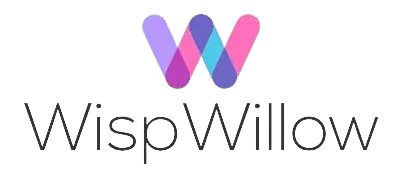Developing User-Friendly Fintech Solutions
The fintech industry has completely changed the realm enhancing accessibility, efficiency and personalization of services. Yet the paced technological progress highlights the role of user experience (UX) in determining the success of fintech solutions. Crafting user fintech solutions involves blending design, strong security measures and ongoing user feedback. This article delves into the components of crafting fintech mobile applications that not address user requirements but also bring them joy.

Understanding User Needs
Central to developing any user fintech solution is a grasp of end users needs and preferences. This comprehension serves as the cornerstone for all design and development choices.
Conducting User Research
User research entails collecting quantitative data on users behaviors, needs and pain points. Techniques like surveys, interviews and usability testing offer insights into users expectations from fintech solutions. A fledgling fintech startup creating a budgeting app might engage in interviews with users to grasp their habits, challenges in managing finances and desired features, for an app.
Creating User Personas
User personas are profiles that depict segments of the target audience.
These character representations assist design teams in staying focused on meeting the needs and preferences of their users throughout the fintech app development phase. For instance in the case of a mobile banking application these character representations could encompass professionals seeking investment opportunities, small business owners requiring transaction management and retirees prioritizing secure savings.
Crafting User Friendly Interfaces
A user-friendly interface holds importance for fintech applications as it enables users to easily navigate through the app tasks efficiently and have a smooth experience.
- Simplified Navigation
- Streamlining navigation involves creating a well organized interface that allows users to swiftly locate what they are looking for. This can be accomplished by employing menu structures, intuitive icons and a logical flow. A peer to peer payment application might utilize a navigation bar with icons like Home Send Money, Transactions and Profile to ensure that users can access functions with just one tap.
- Uniform Design Language
- Maintaining consistency in design language helps users become familiar with the app thereby reducing the learning curve and improving usability. This entails using colors, fonts and interactive elements throughout the interface.
For example, adopting a color palette and typography across a trading application not only enhances visual appeal but also enables users to promptly recognize and trust the app’s features.
- Maintaining consistency in design language helps users become familiar with the app thereby reducing the learning curve and improving usability. This entails using colors, fonts and interactive elements throughout the interface.
- Interactive and Engaging Features
- Features, like animations, tooltips and feedback messages enhance user interaction. Offer guidance. These additions make the app more lively and user friendly. For instance after a user finishes a transaction a brief animation or a success message can provide reinforcement boosting their feeling of achievement and trust in the app’s reliability.
Prioritizing Strong Security Measures
Security plays a role in financial software development. Users should have confidence that their financial information is secure. Striking a balance between security and ease of use is essential for creating a fintech solution that users will find to navigate.
Multi Factor Authentication (MFA)
By implementing MFA, a layer of security is introduced where users must confirm their identity using methods like passwords and biometric verification.
For example a mobile banking application may utilize fingerprint recognition in conjunction with a password to ensure that authorized individuals can access the account.
Data Encryption and Secure Transactions
Securing all data transmissions through encryption safeguards sensitive information from access. Employing payment gateways for transactions further fortifies security measures.
For instance an online payment processor may utilize end-to-end encryption and tokenization to safeguard transaction data from the moment it enters the system until it reaches its destination.
User Feedback and Continuous Improvement
In the realm of technology (fintech) it’s crucial for applications to evolve based on user feedback and iterative enhancements. This strategy ensures that the app stays relevant and aligns with the changing needs of its users.
Regular Testing for Ease of Use
Conducting usability tests is essential to pinpoint pain points and areas that can be improved. This process involves observing how users interact with the app and gathering their insights on the experience. Digital wallet app could carry out usability assessments with a set of users to detect any issues arising from new features or updates.
Integrating User Input
Seeking and integrating user feedback into the development phase serves to refine the app’s functionality and improve its ease of use. This input can be gathered through in app surveys, feedback forms and user reviews.
For example a fintech enterprise might introduce a feedback feature, within their app enabling users to share suggestions or report problems. The development team can then prioritize these inputs for resolution.
Wrap Up
Crafting user centric fintech solutions is an endeavor that necessitates an understanding of user requirements, intuitive design principles, strong security protocols and ongoing enhancements. By focusing on these aspects fintech firms can create apps that not only fulfill needs but also deliver an enjoyable user journey.
In a field where ensuring customer happiness crucial it is vital to prioritize user focused design and development approaches, for achieving success.







